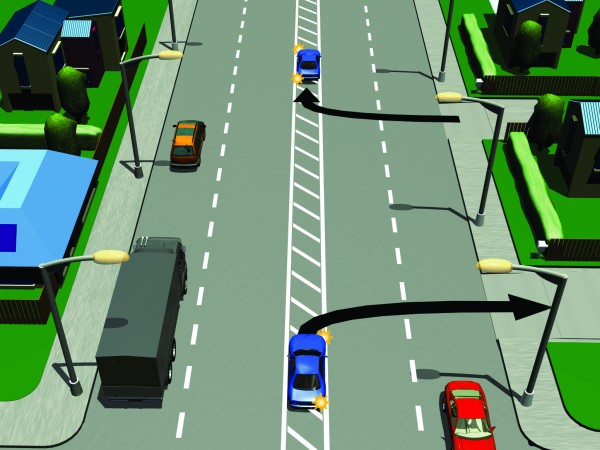Flush medians are white diagonal lines, painted down the centre of some urban and semi-urban roads, marking an area about one-car-width wide.
They're called 'flush' because they are not raised, just painted on the surface of the road. Sometimes, however, there will be raised islands on the median to provide extra protection for pedestrians.
Flush medians are there to:
provide a wider separation between traffic streams on either side of the road
provide pedestrians with a place to pause while crossing two traffic streams
provide a refuge for vehicles turning into and out of side roads or driveways.

Don't use flush medians as:
overtaking lanes (except for short distances just before the turn or when preparing to turn right and other traffic is occupying the adjacent lane)
a place to park.
It's an offence to use a flush median to overtake, or to park on one.
In New Zealand, there has been a 19% overall reduction in crashes on streets where flush medians have been installed. Rear-end crashes have reduced by 66% and incidents involving pedestrians by 30%.
It's alright to drive on a flush median for a short distance if you're turning into or out of a side road or driveway. You can use them to slow down before making a right-hand turn, or to merge left into a gap in the traffic flow.
If you're using the flush median to make a right-hand turn you should indicate, then steer gently onto the median rather than at an abrupt angle. Use the median as an area to slow down and brake. This way the following traffic doesn't have to slow down rapidly to avoid you.
Carry out a similar manoeuvre if you're using the flush median as a refuge before merging into traffic on your left. Remember to indicate and check your mirrors, accelerate, and move gently into a gap in the traffic.
When you're using a flush median, always remember to watch out for pedestrians, other vehicles using the median and any raised islands.
See the online version of the New Zealand road code.